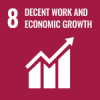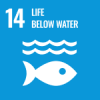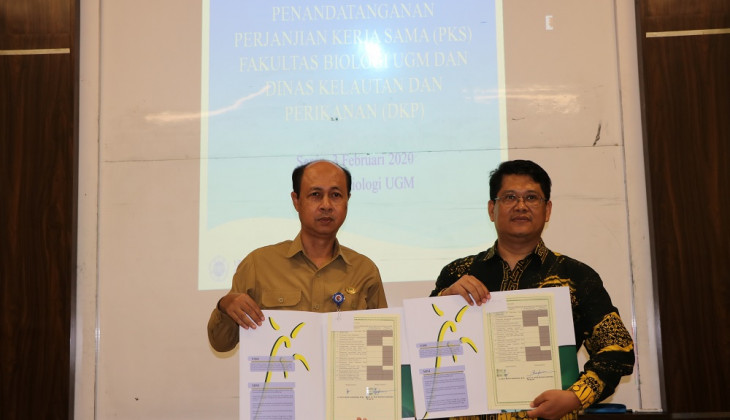The UGM Faculty of Biology and the Special Region of Yogyakarta (DIY) Department of Marine Affairs and Fisheries are collaborating in implementing technology to support the mass cultivation of wader fish.
Dean of the UGM Faculty of Biology, Prof. Dr. Budi S. Daryono, M.Agr.Sc., expressed his gratitude to the Department of Maritime Affairs and Fisheries DIY for being willing to collaborate with the UGM Faculty of Biology. He hopes that the cooperation can develop further and the results can provide benefits for both parties.
“We hope that the cooperation can develop even further, not only for wader fish. There are also many other research at the Faculty of Biology, such as on crab, eel, lobster and shrimp,” he explained, Monday (3/2) after the formal signing of the cooperation agreement at the UGM Faculty of Biology.
Head of the DIY Department of Marine Affairs and Fisheries, Ir. Bayu Mukti Sasongka, M.Sc., hopes that the cooperation that has been agreed upon can be immediately followed up so that wader fish seeds are ready to be commercialized.
“We are ready to follow up on this cooperation so that it can produce seeds that are commercialized, not just for research,” he explained.
Bayu said that the use of technology in wader fish cultivation is expected to improve the welfare of the community. He also hopes that later, cultivation with the application of technology is not only for wader fish, but also other local fish varieties.
Meanwhile, the head of the technology development team for mass cultivation of wader, Dr. Bambang Retnoaji, explained that the implementation of technology in the cultivation of wader is important. This is because the population of this type of fish in nature is getting smaller and continues to decline from year to year due to exploitation to meet market demand for this fish. The technology implementation for spawning, hatching and breeding that he has developed is expected to support the conservation of wader as well as be economically beneficial.
Bambang said that the reproduction of wader in nature takes place once each season. Meanwhile, the technology application he has developed can encourage the reproduction of wader within 2 weeks.



